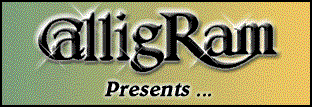 |
||||||||||
|
||||||||||
|
|
||||||||||
|
309-664-1747 |
||||||||||
|
|
||||||||||
|
Register with us today if you would like to be informed of upcoming exhibits and events. |
||||||||||
 |
|
"Rabbie Issa Goes To Washington" By Dr. Eden Naby "During the Smithsonian Folklife Festival for 2002 called "The Silk Road: Connecting Cultures, Creating Trust," Assyrian culture received unprecedented attention. The two week event is estimated to have drawn 1.3 million people to the Mall in Washington, DC. Conceived by the Silk Road Project initiated by Yo Yo Ma, the focus of this event opened the door for the participation of Assyrians, thanks to the inclusion of an Assyrian in the initial planning of the project in the summer of 1999, and the appreciation of Assyrian contributions on the Silk Road by Drs.. Richard Kurin and Richard Kennedy of the Smithsonian Center for Folklife and Cultural Heritage and Professor Theodore Levin of the Silk Road Project and Dartmouth College. From 26 June to 7 July 2002, many who flocked to observe and participate in the re imagining of the Silk Road had the unusual opportunity to catch site of a dignified man sitting at a table writing in the Assyrian language he first learned at his home in Urmia. Behind him, on reed walls created by Rajeev Sethi Scenographers for the atmosphere of the Paper Garden in the Silk Road, hung a dozen or so of the examples of his calligraphy. This man was Rabi Issa Benyamin. This was the first time I met Rabi Issa. I had invited him to consider participating in the Festival through his daughter, Ramica, on the advice of Tony Khoshaba, of Illinois. When he consented to be present for the two weeks, I warned Ramica that Washington would be hot and muggy, that he would have to deal with members of the public asking many questions and that it would be tiring. The Benyamin family rallied and made plans for Ramica (Mrs. Benny Taimoorazi) to accompany her father during the first week and her brother Ramsin, the second week. And so it happened. But none of us had expected the interest that the calligraphy, the poster, and the books and catalogue would generate. Sitting under a tent that held displays of Chinese, Uighur and Ottoman calligraphy and accomplished calligraphers, Rabi Issa "did the Assyrians proud." He patiently answered questions, discussed his art, and from the first day, began to write names in Assyrian for men and women, boys and girls, sweethearts with names together on the same page, American names, African names, Chinese names and Indian names. He wrote over 2000 names. His admirers stood in line their eyes glued to the carefully moving hand as he created the letters for a hundred or so Megans , Sarahs and Davids, in addition to some far more exotic names. Each person would print his or her name on a piece of paper with pencils that Rabi Issa kept sharpened with his pen knife. Children just learning to write would labor over their names as proud parents watched. Rabi Issa would then listen to the pronunciation and write. At the end of their names he would add his hallmark stylized signature. What a rare and singular occasion. His daughter and son helped with the explanations, as did a sympathetic Armenian relative from the Washington area, Dr. Thomasian. Mme. Clara, his wife kept Rabi Issa supplied with water, and the occasional chicken kabob from the Chinese vendors on the Silk Road. In temperatures that approached 107 degrees Fahrenheit, Rabi Issa continued to write. In between he greeted and talked to the several dozen Assyrians who appeared at his table, attracted by the unusual presence of Assyrian culture. Some came after having attended the second Assyrian cultural component of the Folklife Festival, a group of eleven people from Qamishly, Syria who sang in both the eastern and western dialect of our vernacular language, always beginning with the classical Syriac, The Lord's Prayer. The Smithsonian generously underwrote the costs of the travel and lodging of this entire group, while the sponsor for the calligraphy came from a member of the Assyrian community in the United States, Mr. Sam Koumi, president of SKF International (New York City). If breaking out of our cultural ghetto to let the larger world appreciate our culture is to be accomplished, then we need a champion like a 76 year old man of dignity, culture and talent to lead us. Basima/Towde Rabi Issa." |
|
[Home] [New] [Register] [Gallery] [To Order] [Biography] [Publications] |